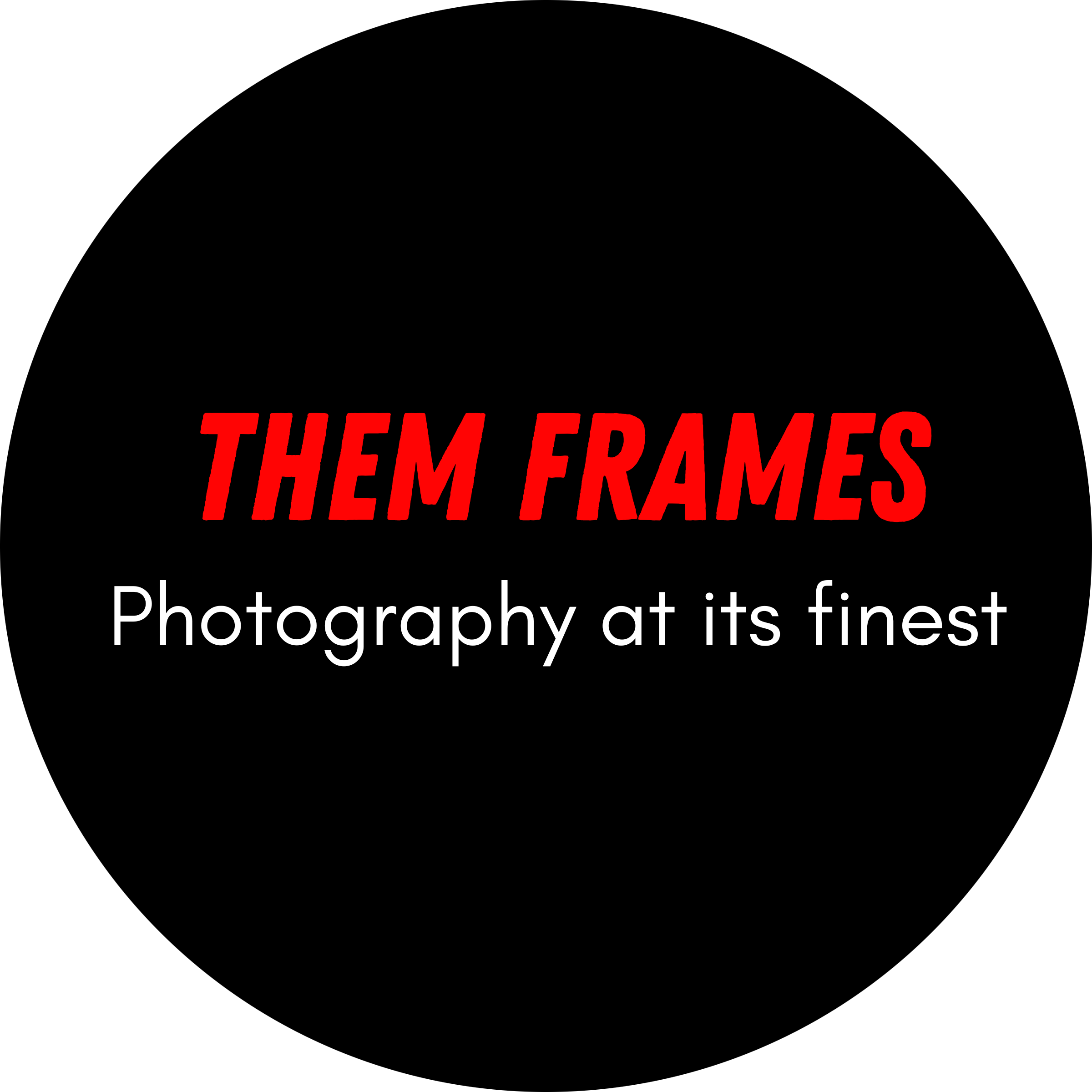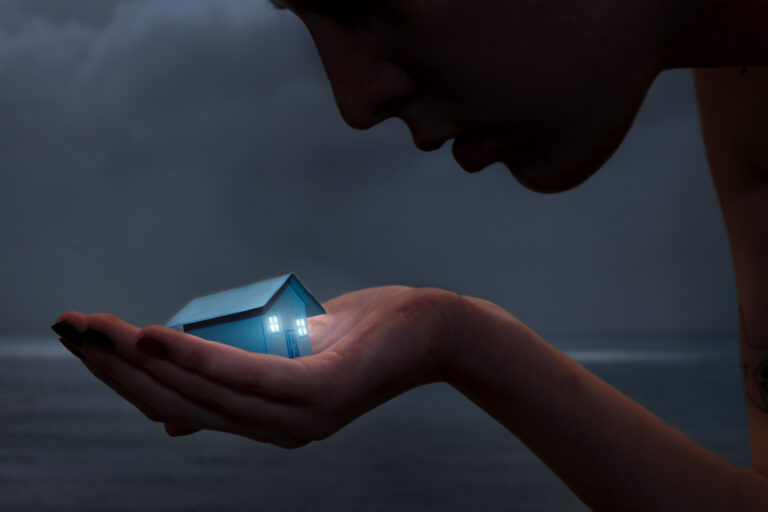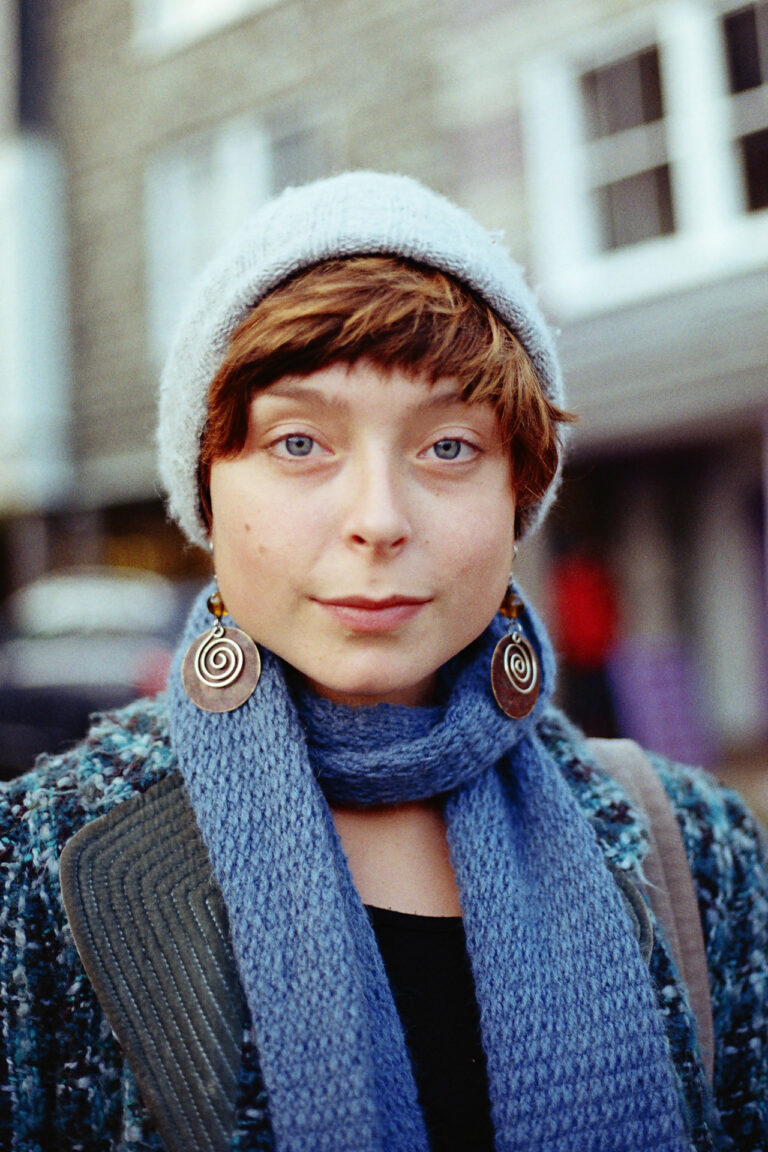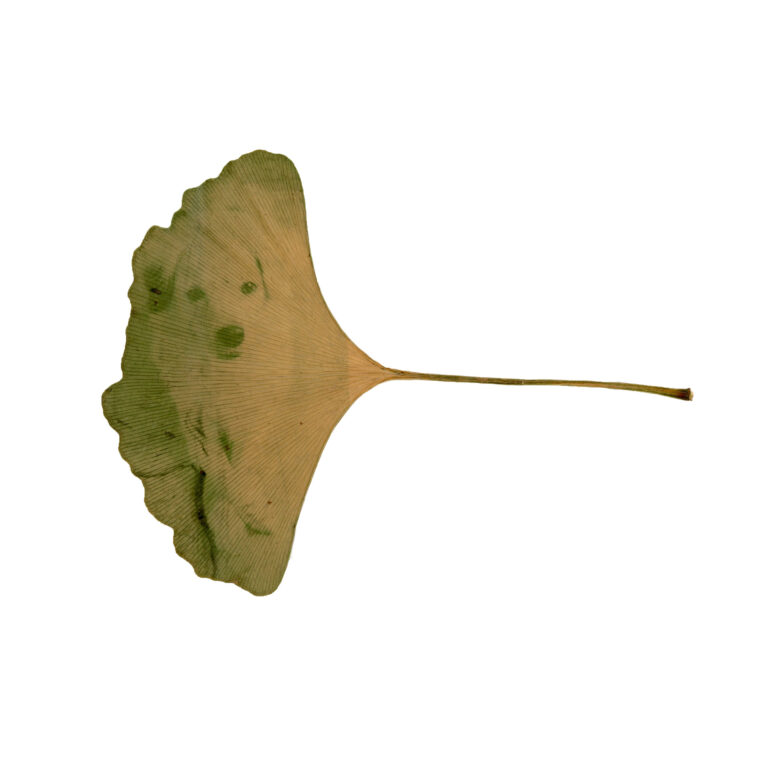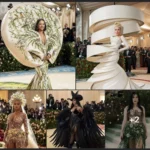
“When you are facing life or death, you just have to get through it,” writes the photographer Carly Clarke. She adds, “I feel proud that I documented any of it at all considering how ill I was.” Clarke’s journey through potentially life ending illness is heartbreaking, the photos she made and the story she tells are nothing short of inspiring.

I have a confession to make. It was two in the morning when I found Clarke’s story, and I did so purely because of selfish reasons. Currently doing my best to overcome a chronic illness, I was experiencing a moment of deflation and turned to the photography community to help lift my hopes of one day getting better.
For clarity, my current health concerns pale into insignificance compared to what Clarke had to endure, but that’s what I needed to see. I needed to find people who had faced unimaginable adversity and managed to overcome it, while they used photography as a means to document, distract, and on an emotional level, heal.
At the age of 26, Clarke was diagnosed with Hodgkin Lymphoma, a form of cancer that develops in the lymphatic system. Still at a very young age, she had to adapt to the idea of her health deteriorating, her appearance changing, and worst case, her life ending.
How does one describe the images she created throughout this time? The biggest compliment I can give her series Reality Trauma is that the photographs provide all the information you require to understand her experience, so much so that any words I could use to describe them are redundant and couldn’t do them justice.
Not redundant, however, are the words of Clarke herself. This is her story to tell and she has done so in a manner that perfectly compliments each image from her series. Although Them Frames asks the questions, it’s her responses that will leave a lasting impression.
Them Frames: Hello Carly, it has been just over a decade since you created Reality Trauma. How are you now and how do you feel about the work?
Carly Clarke: I am well now thank you. I feel differently about Reality Trauma all the time, it is something that has changed with time. When I was creating it, for me it was about documenting as much as I physically could. However, I was very, very unwell when I was diagnosed with Hodgkin Lymphoma, I was about seven stone and extremely frail and so even the little energy that it took to set up my camera was a difficult task.
It felt like everything was against me all the time, my life had completely changed in every possible way and my focus on photography was my little escape, but it also helped me to face what was happening to me as well.
Now I look back and feel that what I did was an incredible achievement. I think about things I could have photographed or that I had not, but it’s easy to think that now being full of life and energy again.
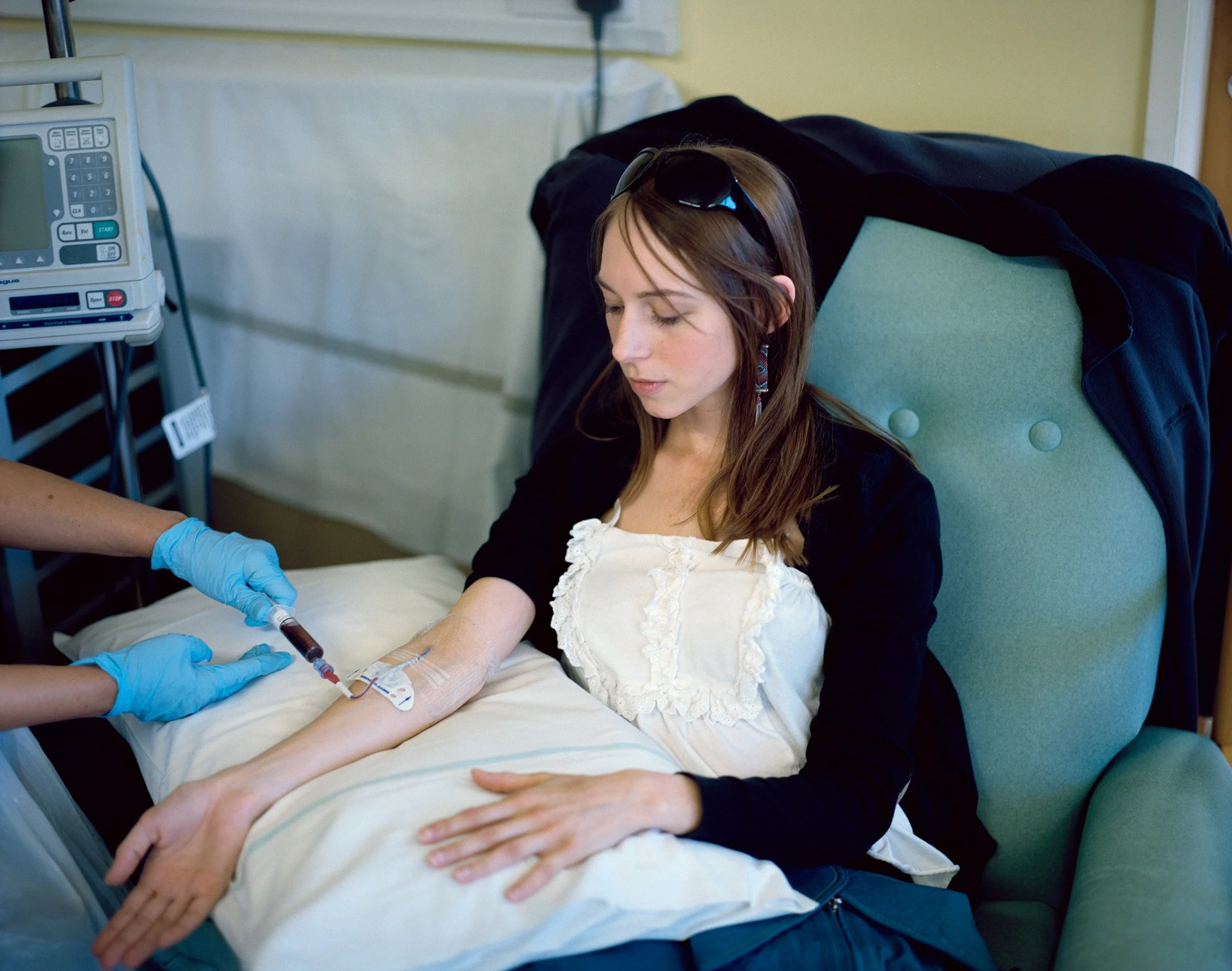
Them Frames: Living with and treating cancer, it would have been easy for you to turn away from photography. What do you think compelled you to document your journey through the illness?
Carly Clarke: I think what compelled me was the idea that I might die and not make it through the chemotherapy. These were possibly the only moments of life I had left to live and I felt I had to document it. I was living in the present moment too and I realized the fragility of life. Not least because I was going through such drastic changes physically, emotionally and mentally and it was all a completely new experience to me.
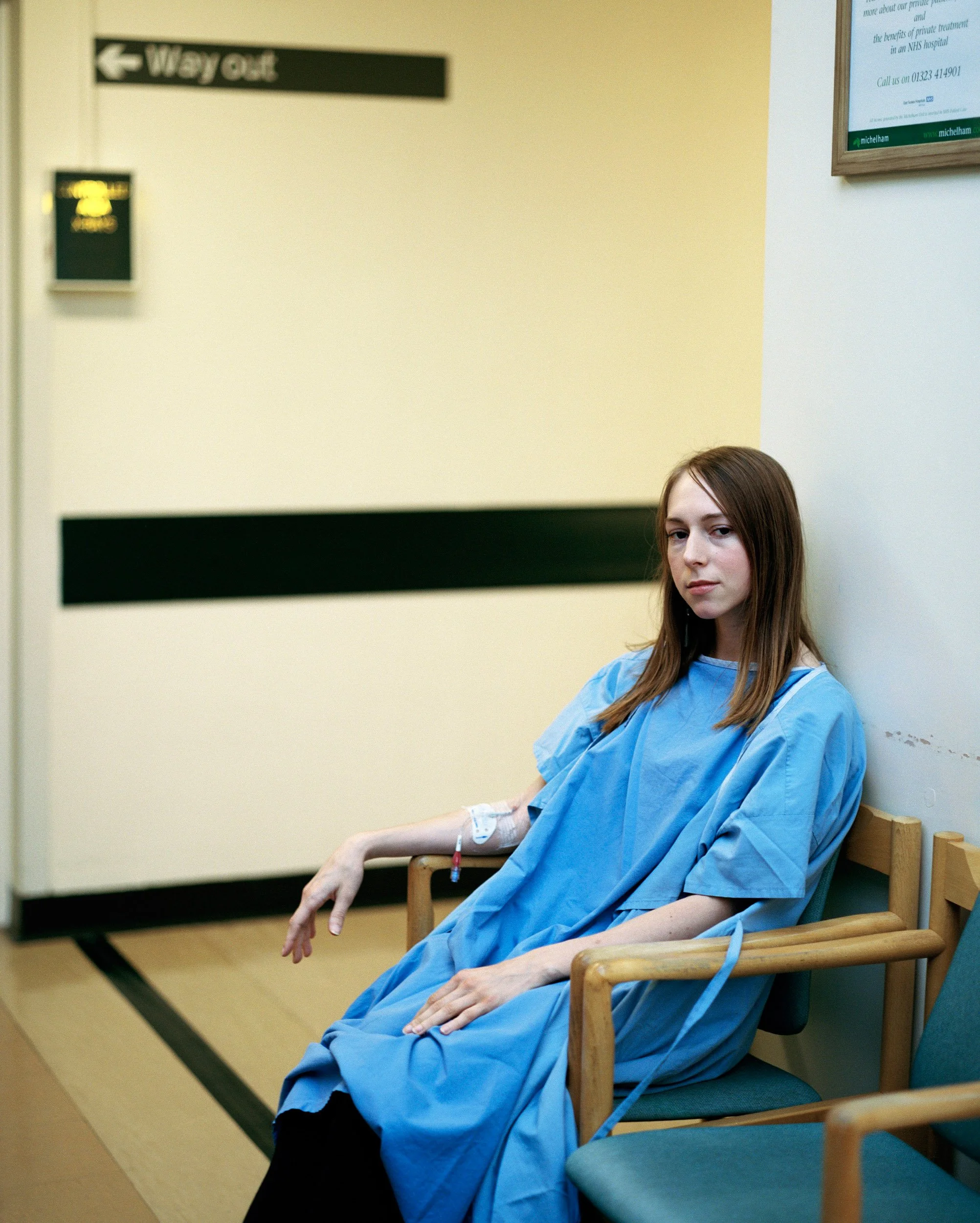
Them Frames: One of the many side effects of cancer treatments is a change in appearance. What impact did photographing your changes have on how you managed them mentally and emotionally?
Carly Clarke: I think initially it helped me. Then it got tougher. I did not know the amount of change I would encounter and so at times it was difficult to face the reality of these changes and the many drugs I was taking had a huge impact on that too. I lost my hair gradually, which I wasn’t expecting. My fear was that I would just lose it all at once and so despite hearing different stories, I still believed it would happen to me. It didn’t. It took many months and my hair thinned and I battled with letting it go towards the end, I kept cutting it shorter and shorter until I was ready to let go. I even left my hair with big bald patches and strands before finally allowing my dad to shave off what was left.
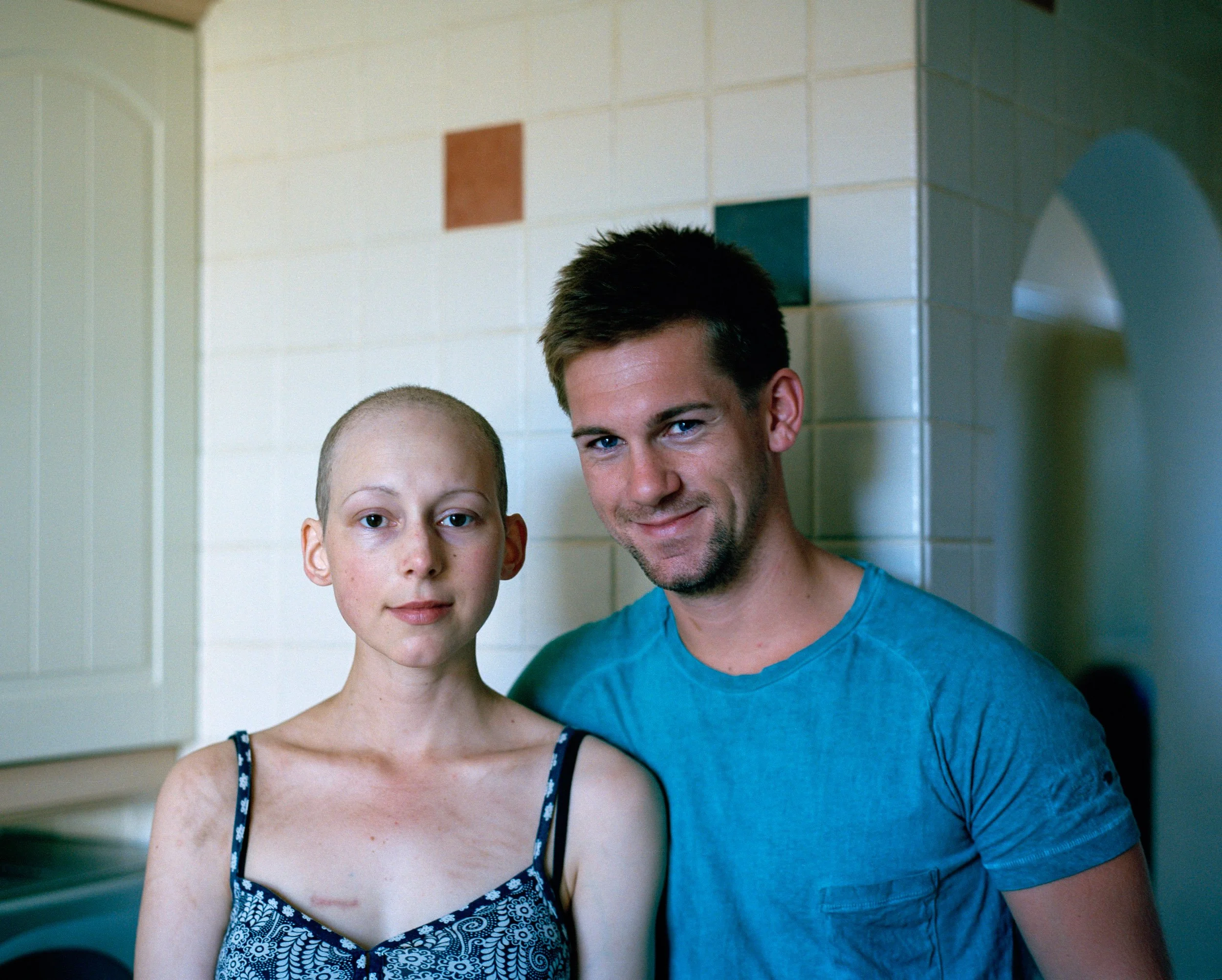
Once this happened there was a big sense of relief and I actually loved my new look and embraced it in a way I never thought I would. It was an important moment and I took self-portraits of this process. Although, there is one photo that takes me back to when I felt awful and I literally couldn’t face myself. It was at this point that I stopped taking photos and lost interest in photography. I was definitely finding that particular time very challenging and I felt that I wasn’t what I looked like to the outside world, this alien-like appearance was only temporary, because inside I was strong and persistent with my will to beat the cancer.

Them Frames: Please can you share how you were able to remain positive and have the belief you were going to overcome the cancer?
Carly Clarke: I can assure you I had moments where I wasn’t feeling so positive, it’s part of going through something like this. There were many days where I couldn’t see the end but I think doing something creative such as photography helps to maintain a positive outlook.
It’s when you have those bad days, when you feel like you can’t take another chemo treatment or take any more pain relief or anti-chemo drugs or go back to the hospital for the third time in a day, that you need to find the positivity and that is perhaps why I was so positive a lot of the time. When you experience such pain and suffering, the best thing to do is to find a way out of it.

Them Frames: How did you feel when publishing the work and what was the response like from others?
Carly Clarke: Actually, I wasn’t sure of how people would react. Initially I felt worried about putting it out there because of other people who had lost someone or terminal patients I had known in the hospital. I was very much aware of that and I still am.
While making the project, I began to receive some really positive responses. One of my first strong memories of that was a tutor at university who reacted so strongly to seeing the photo of my hair in the bath. His reaction made me realize how powerful the image was. For me it was only me documenting my experience, but for him it was seeing a young and vulnerable woman losing her hair and having to face that aspect of the cancer.

I started to see that this wasn’t so common for young women like myself, being only 26 at the time, so it put things into perspective. Since then I have had a lot of positivity; when my story was published on the BBC I had literally hundreds of messages from people all around the world who could relate to it in some way and although it was a bit overwhelming, because I hadn’t anticipated this response, it was really wonderful to read the stories and have that connection. I’m also glad to know that it inspired others to be strong and to bring comfort in some way and to know that there is hope. It made me aware that in some way my story and my related project about my brother Joe going through cancer had made some sort of positive impact.

Them Frames: Looking back at that time and that series of photographs, what impact do you think it all had on the photographer you are today? Did it change how you view and document the world and those within it?
Carly Clarke: It was obviously a turning point for me as a photographer because I knew I had created a strong body of work and it was all mine and a very personal project. It was not something I had ever planned to create, unlike other projects before or after that. I definitely became more sympathetic and more drawn towards stories of illness and suffering.
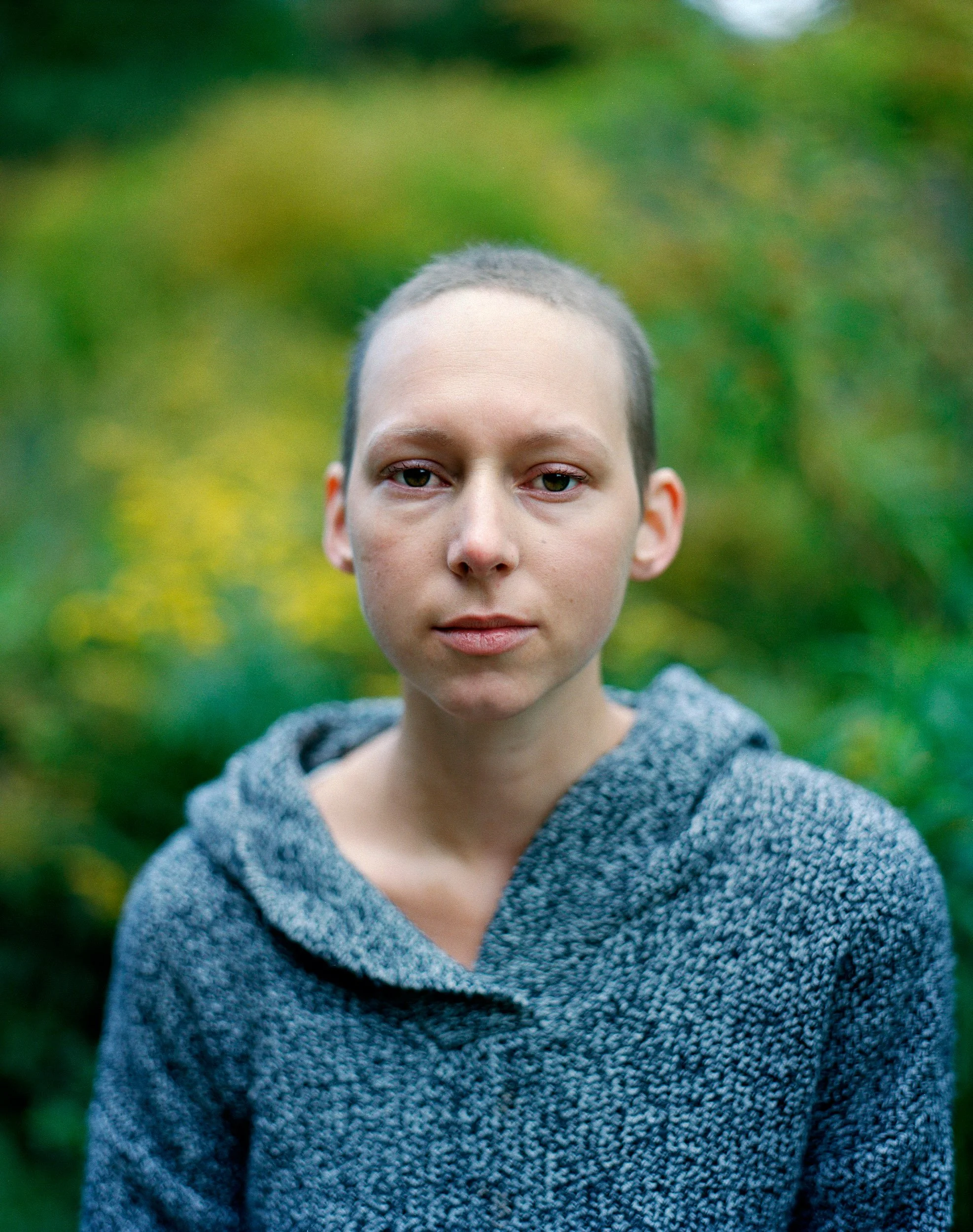
Them Frames: Because it’s such a powerful story, it’s easy for Reality Trauma to overshadow the other fantastic work you have made. Please can you share with us some of the projects you’re most proud of and which you feel speak most to your photographic voice.
Carly Clarke: After my Reality Trauma project I went to India to complete a documentary called ‘Godhūlikāla: India’s Forgotten Elders’ about elder abuse and abandonment, which entailed traveling around the north of India and seeking out stories of such abuse. But along the way I came across elders living with health issues and poverty and other problems so the project widened and also included a positive collection of stories of families living together.
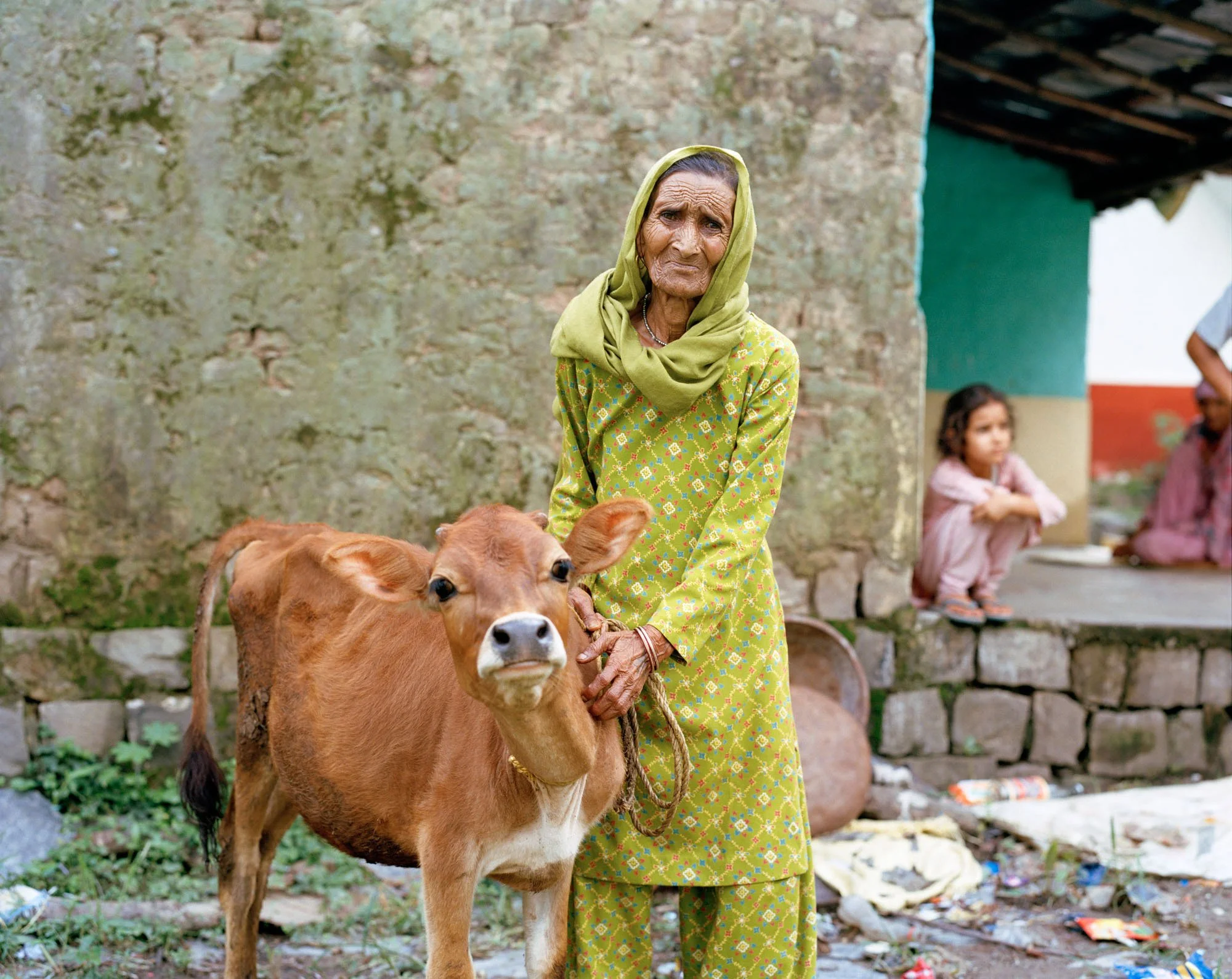
Then, seven years after my own cancer, one of my youngest brothers, Joe, was diagnosed with Hodgkin Lymphoma at the age of 16. So naturally, I documented his treatment as well. Although it took a completely different course to mine and ran into issues that I did not with my own treatment. He went on to have chemotherapy over the course of two years and had a successful stem cell transplant despite many relapses. Thankfully he is now in remission.

I’m currently working on a long-term project about my home town of Eastbourne. I am documenting the people in the town but also the way it is changing from its traditional role as a seaside resort. I have spent quite a lot of my time living away from the town, in London and both America and Canada, but having cancer brought me back home to Eastbourne again, and I decided to stay.
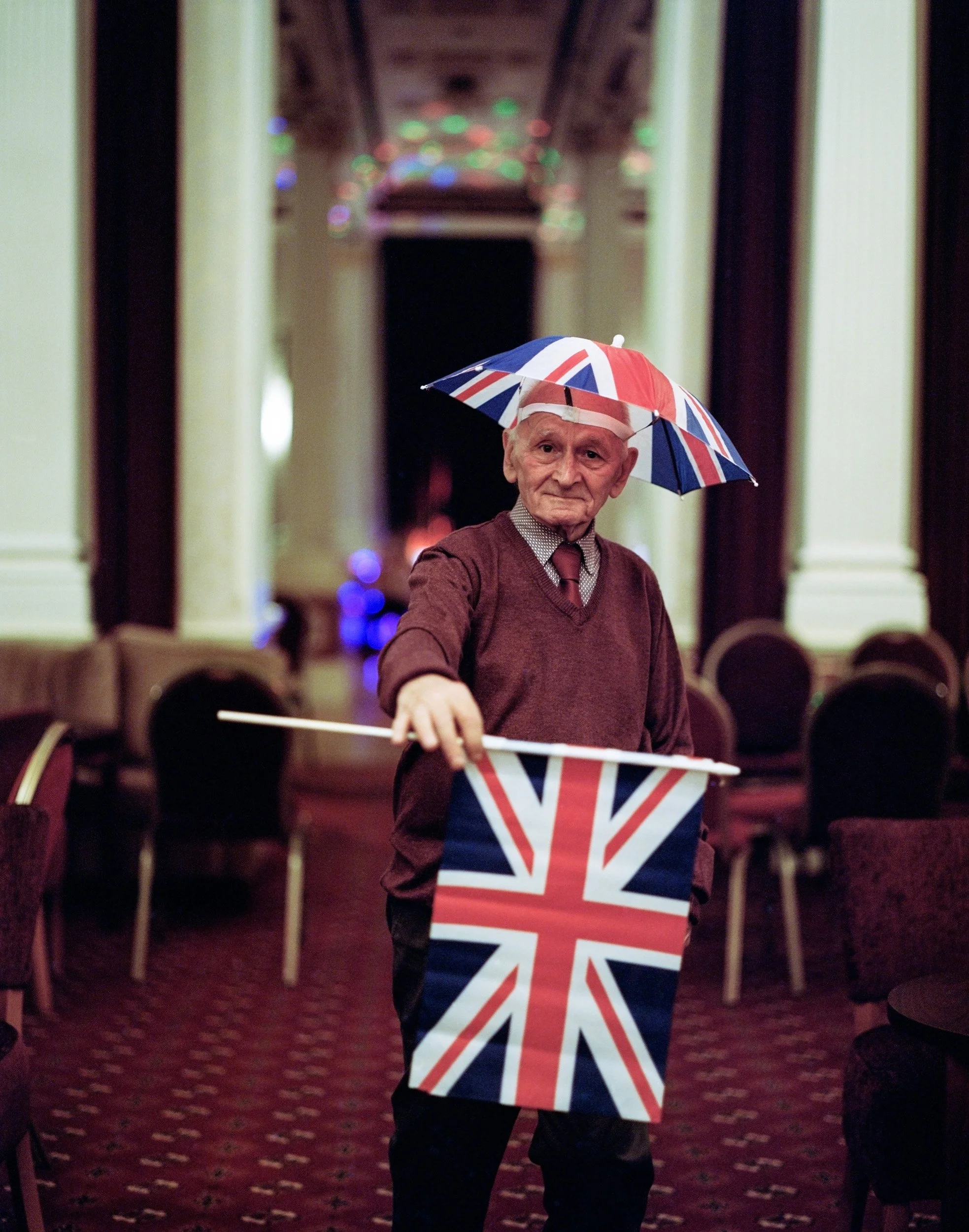
Them Frames: In 2022 you were a recipient of the Royal Photographic Society’s Vic Odden Award. Can you put into words how that felt?
Carly Clarke: I was in shock when I found out and for a few months I couldn’t tell anyone and didn’t really believe that it would happen. I was so grateful to receive it and to be part of such an astonishing list of previous recipients of this award.
Them Frames: Finally, would you please share a recent self-portrait and share with us what you feel about the woman you see today and the story she has had so far?
Carly Clarke: I took a photograph of myself with the same blanket as ‘The Last Day of Chemotherapy’ but this time in my apartment rather than in the hospital! The longer life goes on and the further away I get from the illness, it sometimes doesn’t feel like it even happened. Then this project reminds me that it really did and so do the scars that remain on my body. I have encountered other people who have sad cancer stories and I feel immensely lucky that I survived it.

